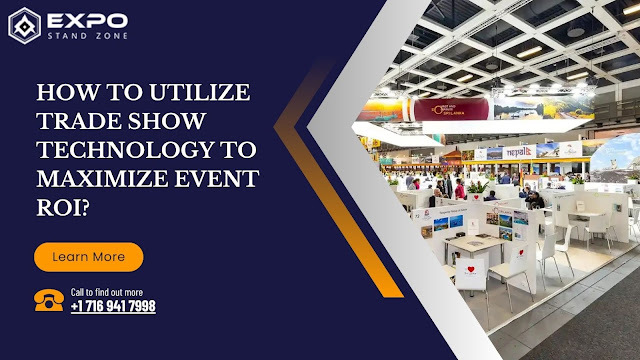From Bland to Brand: Craft a Trade Show Booth That Converts
Trade shows. A whirlwind of sights, sounds, and shouted greetings. Aisles overflowing with eager attendees and meticulously crafted displays. For companies, it's a prime opportunity to showcase their brand, generate leads, and make a lasting impression. But with so much competition vying for attention, how do you ensure your booth doesn't get lost in the sea of signage?
Enter the display booth designer, your secret weapon in the trade show battleground. These creative minds are the architects of brand experiences, transforming a bare space into an engaging and memorable showcase.
This blog delves into the world of trade show stand design, exploring the role of the display booth designer, the design process, and key considerations for crafting a booth that resonates with your target audience.
The Mastermind Behind the Magic: The Display Booth Designer
A display booth designer wears many hats. Part artist, part architect, part marketing strategist, they understand the delicate balance between aesthetics and functionality. Their expertise lies in:
Conceptualizing compelling visuals: From interactive displays to captivating graphics, they translate your brand message into a visually engaging experience.
Understanding spatial dynamics: Booth sizes vary, and designers know how to maximize every square foot, creating a functional yet inviting space.
Knowledge of materials and construction: From lightweight modular components to custom builds, they choose materials that are durable, visually appealing, and budget-friendly.
Adherence to safety regulations: Trade shows have strict safety guidelines, and designers ensure your booth complies with all regulations.
Project management: From initial concept development to booth installation and breakdown, designers manage the entire process, ensuring everything runs smoothly.
A good display booth designer doesn't just build a booth; they build an experience. They understand the psychology of attendees and utilize design elements to capture attention, spark curiosity, and ultimately, drive conversions.
Unveiling the Design Process: From Brainstorm to Booth
The journey from a blank canvas to a bustling booth involves a collaborative process between you and the designer. Here's a peek behind the curtain:
1. Initial Consultation:
This is where you and the designer get acquainted. Discuss your brand goals for the trade show, target audience, budget, and any specific design preferences.
2. Concept Development:
The designer will take your input and create initial design concepts. These may be sketches, mood boards, or even 3D renderings, allowing you to visualize the booth layout, furniture, and overall aesthetic. Feedback and revisions are encouraged at this stage.
3. Content Creation & Fabrication:
Once the final design is approved, the designer will work with a team of graphic designers and fabricators to bring the concept to life. This includes creating engaging visuals, selecting furniture and materials, and managing the construction process.
4. Logistics & Installation:
The logistics of transporting and setting up the booth are crucial. The designer will handle this aspect, ensuring everything arrives on-site on time and is assembled seamlessly. They'll also be there to answer any questions and address last-minute tweaks.
5. Post-Show Support:
Following the trade show, the designer will be available for disassembly and storage solutions for your booth materials.
Standing Out Above the Rest: Key Considerations for Effective Trade Show Design
Now that you understand the designer's role, let's explore some key considerations for crafting a winning trade show booth:
Know your audience: Who are you trying to reach? Understanding their demographics, interests, and pain points will inform the overall design and communication strategy.
Define your goals: What do you want to achieve at the trade show? Do you want to generate leads, showcase new products, or simply enhance brand awareness? Clear goals will guide the design direction.
Simplicity is key: A cluttered booth is overwhelming. Use clean lines, well-organized displays, and high-quality visuals to ensure your message is clear and impactful.
Interactive elements: Go beyond static displays. Integrate interactive elements like product demos, touchscreens, or contests to engage attendees and create a memorable experience.
Lighting matters: Good lighting draws attention to key areas of your booth and creates a welcoming atmosphere. Use a combination of ambient and spotlights to highlight products and signage.
Technology can be your friend: Incorporate digital signage, product demos, or even virtual reality experiences to add a modern touch and provide a more immersive experience for attendees.
Comfort matters: Trade shows are tiring affairs. Provide comfortable seating areas for attendees to rest and chat with your representatives.

.jpg)

Comments
Post a Comment